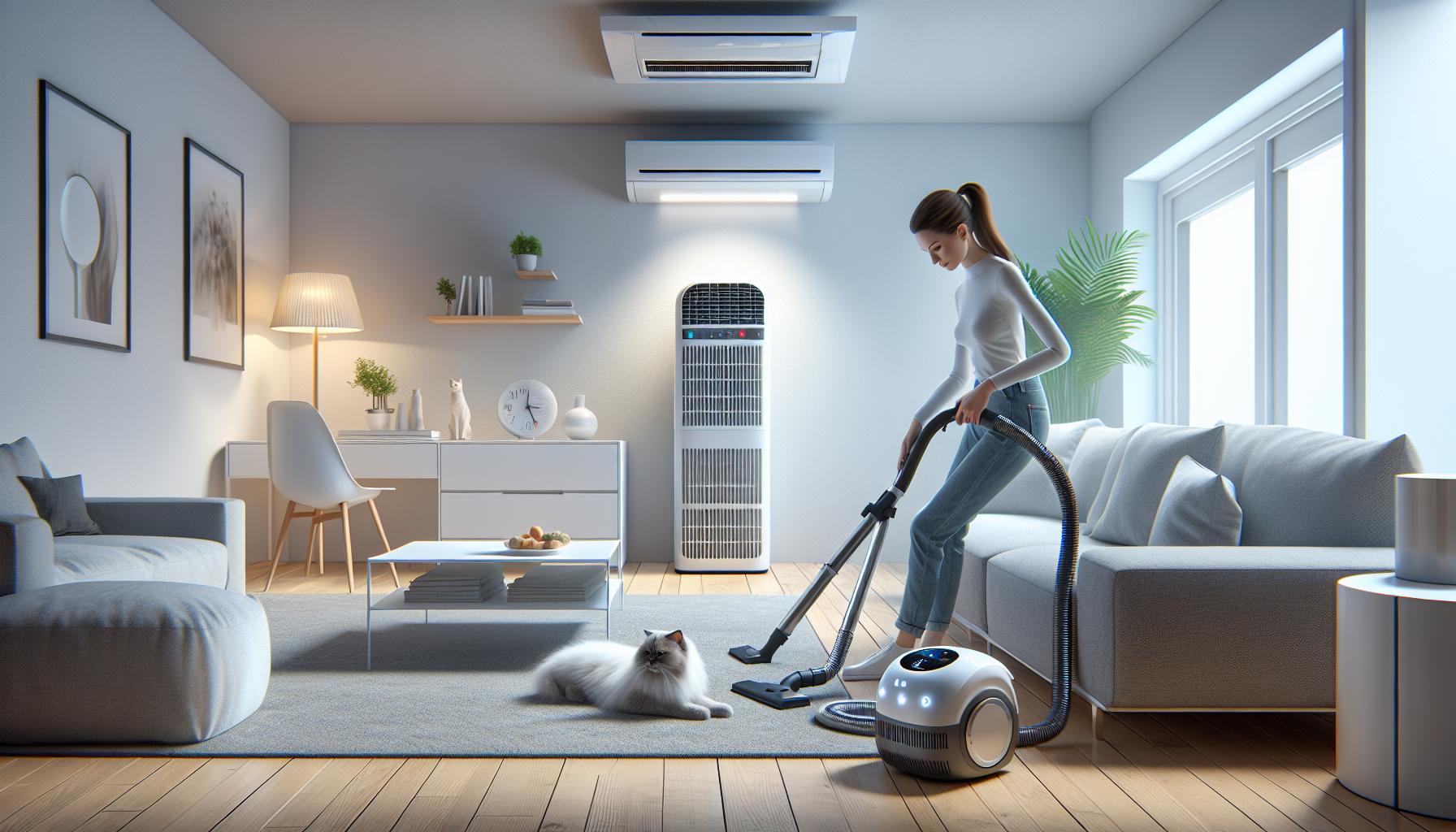Ever wondered if the sneezing fits you experience could be due to cat dander travelling through your home’s ventilation system? If you or a loved one suffers from allergies, understanding how allergens like cat dander move around your living space is crucial. This article delves into whether cat dander can indeed travel through vents, affecting air quality and health.
You’ll discover the science behind airborne allergens and how HVAC systems can either mitigate or exacerbate the spread of these tiny particles. We’ll explore practical steps to minimise exposure and improve indoor air quality. By the end, you’ll have a clearer picture of how to create a healthier environment, even if you share your home with a feline friend.
What Is Cat Dander?
Cat dander consists of tiny pieces of skin that cats shed regularly. These microscopic flakes are lightweight, making them easily airborne. When cats groom themselves, they spread dander throughout the environment. This dander can attach to surfaces such as furniture, clothing, and carpets.
The primary component of cat dander is a protein called Fel d 1, which is found in cat saliva, skin, and urine. When cats groom, the saliva containing Fel d 1 dries on their fur and skin, contributing to the dander. This protein is a common allergen, causing reactions in sensitive individuals.
Cat dander’s microscopic nature enables it to become airborne and circulate through your home. It can travel through ventilation systems, spreading allergens and potentially lowering air quality.
How Cat Dander Behaves in Air

Cat dander, composed of tiny flakes of skin shed by cats, can easily become airborne. These microscopic particles can remain suspended in the air for long periods, significantly impacting indoor air quality.
Structure and Size of Cat Dander
Cat dander consists of microscopic flakes, making it difficult to see but highly effective at remaining airborne. Each flake can carry allergens like Fel d 1, a protein found in cat saliva, skin, and urine.
Dispersal Mechanisms
When your HVAC system activates, airborne dander particles get sucked into the vents, spreading throughout your home. Even if you try to avoid areas where your cat frequents, the dander can still circulate via air ducts.
Can Cat Dander Travel Through Vents?
Indeed, cat dander can travel through vents, affecting indoor air quality and exacerbating allergies. This section delves into the evidence supporting this claim and the factors influencing the travel of these microscopic particles.
Evidence and Studies
Cat dander, composed of tiny skin flakes shed by cats, is lightweight and microscopic. Studies show that these particles become airborne easily. Once airborne, they can be sucked into your home’s ventilation system, circulating through air ducts and vents when the HVAC system operates.
Factors Influencing Travel
The size and lightness of cat dander particles enable them to travel effortlessly through vents. Also, the consistent operation of heating or air conditioning systems aids in the dispersal of these particles throughout your home, even in areas where cats don’t frequent.
Health Implications
Cat dander can travel through vents, significantly affecting indoor air quality and health. Understanding its implications helps in taking preventive steps.
Allergic Reactions
Cat dander is a prevalent allergen, impacting 10% to 20% of allergy sufferers. Symptoms include itchy eyes, sneezing, congestion, wheezing, and fatigue. In severe cases, it can worsen asthma.
Preventive Measures
Regularly clean air ducts and replace HVAC filters to reduce dander spread. Using air purifiers and keeping cats out of certain areas can also help. Regular grooming and vacuuming minimise dander accumulation.
How to Reduce Cat Dander in Your Home
Reducing cat dander in your home involves several strategies to improve indoor air quality and minimise allergy symptoms. You can follow these steps to create a healthier living environment.
Air Purifiers
Using air purifiers with HEPA filters effectively removes airborne cat dander. Place air purifiers in common areas where your cat spends most of its time to maximise effectiveness.
Regular Cleaning
Vacuum carpets, rugs, and furniture using a vacuum with a HEPA filter. Clean hard surfaces with a damp cloth to trap and remove dander rather than spreading it into the air.
Conclusion
Understanding how cat dander can travel through vents is crucial for managing indoor air quality and allergy symptoms. By recognising the role of HVAC systems in dispersing these microscopic particles, you can take effective measures to minimise their spread. Implementing strategies like regular cleaning, using HEPA filters, and maintaining your HVAC system can significantly improve your living environment. With these steps, you can enjoy the company of your feline friends without compromising on air quality or your health.
